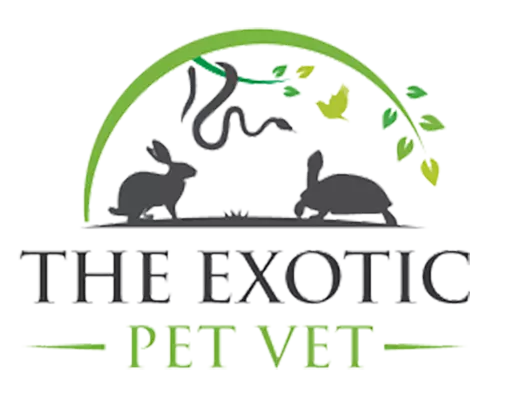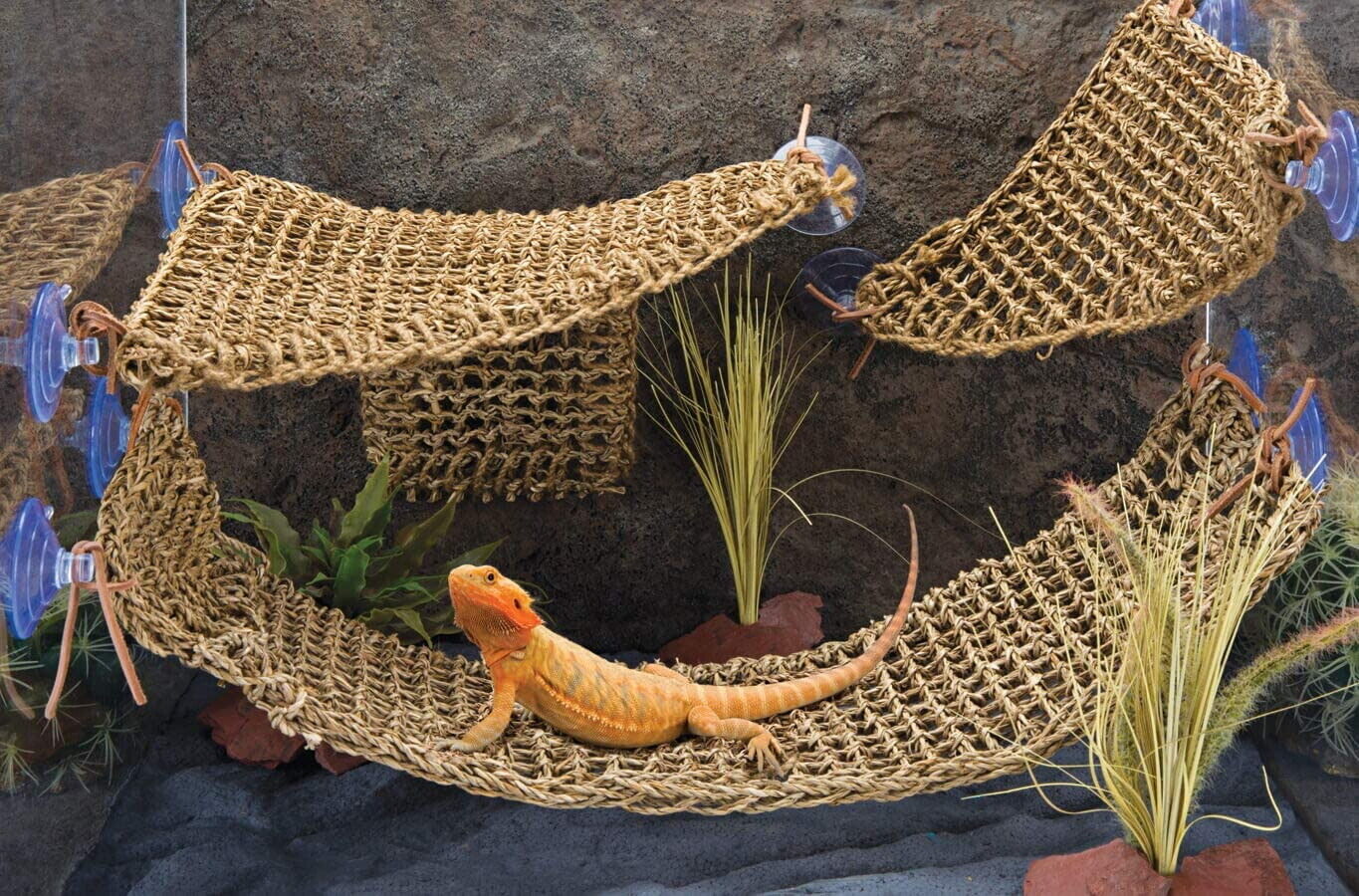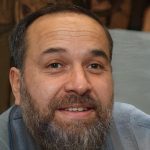Welcome to the wonderful world of bearded dragon ownership! If you’re looking to give your new scaly friend the home of their dreams, then you’ve come to the right place. From the basics to the bells and whistles, here you’ll find all the information you need to create a safe and comfortable habitat for your bearded dragon.
With a few simple steps, you’ll have your bearded dragon living in the lap of luxury in no time. So let’s get started and make the perfect tank setup for your slithering sidekick!
Type of Bearded Dragon Enclosures
Bearded dragons are popular pets due to their gentle disposition and easy-to-care-for nature. You must set up a tank for your bearded dragon if you want to give it a secure, healthy, and stimulating environment. There is various type of enclosure, each with specific advantages and disadvantages.
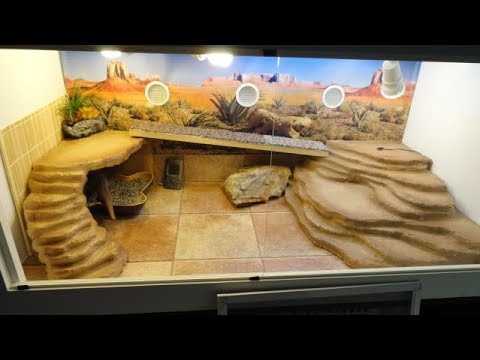
1. Basic Setup: The most basic setup for bearded dragons is the bare-bottom tank. This is an easy-to-use design that consists of a tank without any substrate, such as gravel or sand. The bare bottom of the tank will help keep it warm, making this type of design ideal for young dragons who are still learning to control their body temperature. As there is no substrate to change or clean, it is very simple to clean.
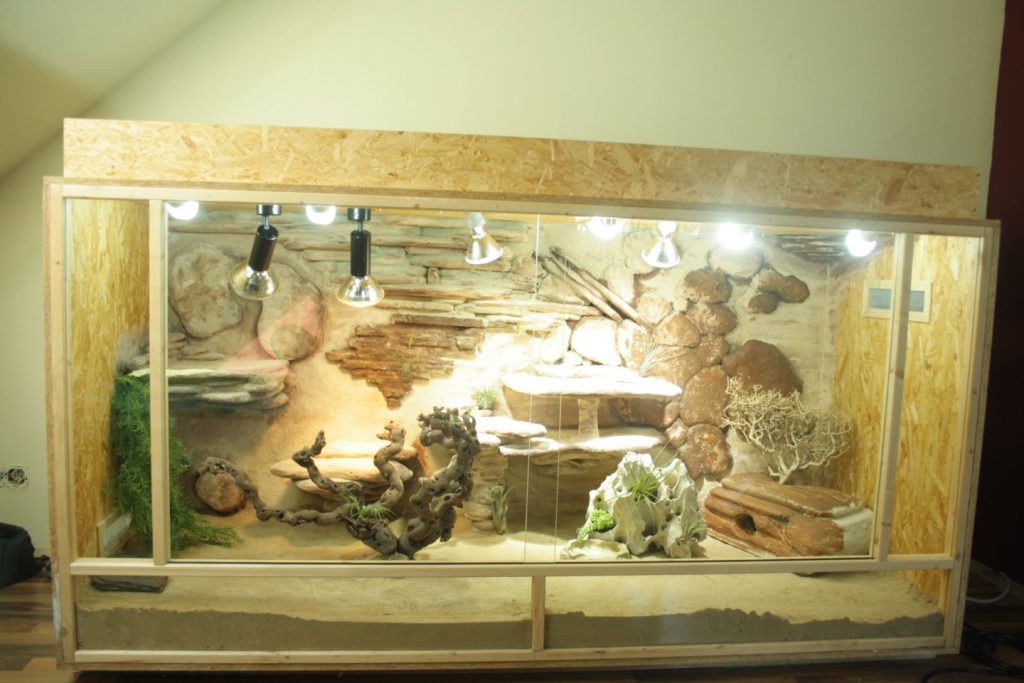
2. Naturalistic Setup: The naturalistic setup is a perfect bearded dragon setup. For this ideal bearded dragon habitat setup, substrates, like sand or gravel, as well as plants, pebbles, and other decorations, are used in this more elaborate design to replicate the dragon’s natural habitat. This kind of setup offers the dragons a stimulating environment and allows them to indulge in typical habits like digging and basking.
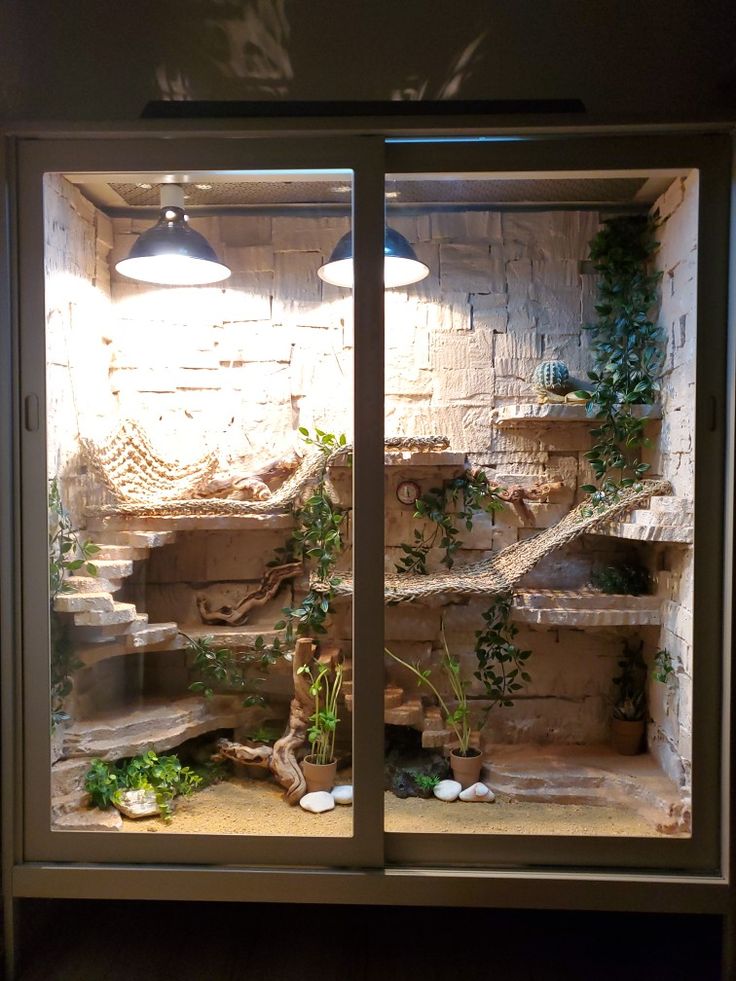
3. Terrarium Setup: The third type of tank setup for bearded dragons is the terrarium setup. This setup is similar to the naturalistic setup, but it also includes a terrarium-style lid. The lid contains openings for air circulation and helps keep the tank at the correct temperature and humidity levels that bearded dragons need. This type of setup is great for keeping out pests and providing a safe and secure environment for your dragon. It creates an ideal bearded dragon habitat.
Best Bearded Dragon Tank Setup
Prepare The Enclosure
To create the best tank setup, it’s important to make sure the tank is the appropriate size for your dragon and that it is kept clean and maintained. With the right bearded dragon habitat setup and a little love, your dragon will be happy and healthy for many years to come.
Tank Size
The size of the enclosure will be determined by the size of your bearded dragon. Although many adult bearded dragons are too huge for this size and may grow agitated, a 40-gallon tank is the standard size for bearded dragons.
Based on the length and age of your dragon, you can choose a proper size tank:
| Tank Size | Bearded Dragon Age | Bearded Dragon Size (Inches) |
| 20 gallons | 1 month | Newborn (5-8 inches long) |
| 30 gallons | 2 month | Babies (10 inches long) |
| 40 gallons | 3-4 month | Juveniles (10-12 inches long) |
| 50 gallons | 5-6 month | Juveniles (12-16 inches long) |
| 75 gallons | 9-12 month | Adults (over 16 inches long) |
| 125 gallons | 12+ months | Adults (over 16 inches long) |
Consider the size of the furnishings and decorations you intend to place in the tank when selecting the tank’s size. By doing this, you can guarantee that your bearded dragons will have enough space to roam and explore.
Tank Material
The type of material used for a bearded dragon’s enclosure is important as it needs to provide adequate security and comfort. There are undoubtedly many options, and you can feel overwhelmed if you start checking them up online.
Whether you want to DIY the enclosure or buy online, there are some basics you need to learn about tank material to set up the best enclosure.
Glass Tank

Glass terrariums, which are popular and widely available, have many advantages for dragons, including a sturdy, screened lid that allows for better airflow and humidity regulation.
Front-opening glass terrariums are practical, but they also make it simpler to get to and clean the tank. But, because of its poor heat insulation, it’s crucial to use a thermometer gun to check the temperature frequently to make sure it doesn’t become too chilly.
You will need a background for the back of the tank if it is made of glass.
This makes your bearded dragon feel more comfortable while also improving the appearance of your tank.
Wood and Glass
For bearded dragons, wood tanks are the perfect environment. Instead of using merely glass with a screen top, we advise the dragon keeper to get a terrarium composed of wood and glass to create a safe and natural habitat for your beardie.
Often, this denotes that one side is made of glass while the other two are made of wood.
If you live in a colder climate or have a lower house temperature, wood is a better choice than a full glass terrarium because it is a great heat insulator.
Also, wood tanks have lots of ventilation, which improves air circulation for the bearded dragon.
In addition, they are far cheaper than glass tanks and provide a much larger living area.
Pvc Material
Another good material for a bearded dragon aquarium is a PVC plastic tank. It is reasonably priced, strong, and lightweight.
If you intend to adopt more than one dragon, stackable PVC cages are the best option. Also, it is non-toxic, making it suitable for your reptile.
In addition, it is simple to clean, which is crucial for bearded dragons because they are delicate to bacteria and dirt.
Poor airflow is a major problem with PVC terrariums, so you need to be a little more watchful with the humidity levels than you would be with other cages.
If you make it a habit to regularly check the humidity, this shouldn’t be too challenging.
Bearded Dragon Substrate
Sand, soil, gravel, paper towels, and newspapers can all be used as tank substrates.
Sand is the most common substrate for bearded dragons since it requires little maintenance and offers a natural surface for them to burrow and dig in.
They can also control their body temperature by burying themselves in the sand since it is cooler. However, for a young bearded dragon, you should avoid using sand because it can be a choking hazard.
Another common substrate for the tank is a carpet made of felt, synthetic grass or hardened desert ground. It is quite similar to sand but less likely to result in impaction. Also, it has a more organic appearance and is more absorbent.
Paper towels and newspapers are the most practical substrates for the enclosure. They are less prone to result in impaction and are simple to clean. They don’t, however, offer the same authentic appearance as sand or soil.
Whichever substrate you choose, make sure it is kept clean and isn’t too deep for your bearded dragon tank. If the substrate is not kept clean, bearded dragons can impact and easily get stuck in deep substrates.
Bearded Dragon Habitat- Tank Temperature
Bearded dragons are cold-blooded, or ectothermic, which means they require outside assistance to regulate their body temperature.
Because of this, we must give them a temperature gradient in captivity that goes from warm at one end of the enclosure to cool at the other.
Temperatures at Day
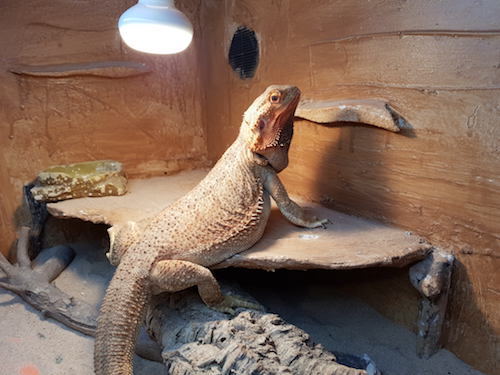
Every dragon requires a place to bask during the day and to keep the dragon warm, this place should be between 40 and 42 °C (104 and 107 °F). To allow your dragon to adjust body temperature as needed, other areas of the tank should be cooler, with the cool end remaining at 22–25°C (71–77°F).
Temperatures at Night
Since the temperature naturally drops at night, you have a little more discretion with your nighttime temps than you do during the day.
Bearded dragons may sleep contentedly at temperatures as low as 15°C (59°F) at night. Of course, it’s not necessary to maintain a basking area at night.
Heat Sources
Under-tank heating elements, like a heating pad, won’t be effective enough to raise the ambient temperature to the necessary levels for a Bearded dragon, so an overhead heat source should be installed.
This can be achieved by using a heat lamp, such as one with halogen bulbs, or a ceramic heat emitter set into a ceramic bulb holder. In order to control and maintain a constant temperature, both of these devices should be connected to a high-range thermostat that is compatible with them.
We advise buying 2 independent thermometers to make you completely confident that the temps are optimal on both sides of the tank and during the day and night.
Tank Humidity
To stay healthy and active, your dragon will need a certain humidity level in their aquarium.
Depending on the age, size, and species of your dragon, the ideal humidity level for a bearded dragon tank is between 30 and 40%.
While desert-dwelling species may require lower humidity levels, younger bearded dragons often need slightly greater humidity levels than adults.
Your bearded dragon will have highly wrinkled skin if it is dehydrated. Beardies who are shedding or dehydrated will prefer to bath.
You must use a hygrometer or humidity gauge to keep the right humidity level in your bearded dragon’s tank. With the aid of this instrument, you will be able to precisely gauge the humidity level in the air and make any necessary modifications.
You can spritz the enclosure with warm water every few days to raise the humidity level in the tank where your bearded dragon lives.
To increase the humidity levels, you can also lay a small dish of water close to the heat source. To prevent contamination, make sure you replenish the water every few days and maintain it clean.
You can use a dehumidifier or air conditioner to lower the humidity level in the tank where your bearded dragon is kept.
These can assist control the humidity levels in the tank, but they should only be used in moderation because they can make the air excessively dry.
Bearded Dragon Lighting
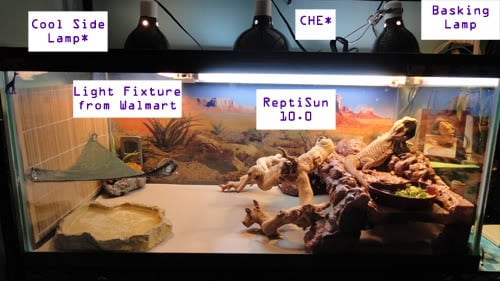
Bearded dragons come from deserts and need their entire tank to be lighted up so they can feel at home because they are diurnal lizards and are typically exposed to the hot Australian sun.
In comparison to just putting the light fixture wherever on the top of your tank, bulb placement is a little more difficult. As a result, one of the most frequent mistakes made by new bearded dragon owners is inappropriate bulb placement.
You should consider the light fixtures and their placement before purchasing the bulbs. Bearded dragons should not be more than 12 inches away from bulbs. It is important to mount it in the proper location.
Make sure there is nothing between the fixture and the reptile and that it is either set on a surface covered in wire mesh or hanging from the top of the enclosure.
A standard incandescent bulb contained in a straightforward, reasonably priced clamp lamp and a separate UV fluorescent light in a regular casing makes an excellent combo for young dragons.
Both of these fit inside your mesh lid. The system’s low cost, especially when compared to mercury-vapor bulbs, and the fact that you can use them for your adult enclosure later are advantages.
Is UVB Light Really Necessary?
Any setup for bearded dragons must have UVB fluorescent lighting; else, the creatures can develop a condition known as Metabolic Bone Disease (along with a few other health problems).
Things You Should Know About UVB Illumination
The wavelength of UVB light, also known as ultraviolet B light, ranges between 280 and 315 nm.
Yet, UVB light is essential for the survival of many reptiles, including bearded dragons.
UVB light aids in controlling the skin’s generation of vitamin D3 in reptiles. Because it enables your bearded dragon to absorb and use calcium, vitamin D3 is crucial.
As a result, reptiles without adequate UVB sun will have low levels of vitamin D3 and consequently poor levels of calcium.
UVB Lighting Placement and Sizing

Maintaining the health of your bearded dragon depends greatly on selecting the proper size of UVB light.
The UVB bulb should ideally cover between 2/3 and 3/4 of the tank’s length. This enables your bearded dragon to take in healthy UVB rays wherever it chooses to rest or perch.
Most terrariums employ linear fluorescent bulbs as their primary source of UVB lighting. The highest grade, 10.0, is required for bearded dragons; the ultraviolet lamp of your choosing must provide 5-7% of UVA/B radiation and must cover 80% of their habitat.
Juvenile beardies need adequate UVB to develop strong bones and prevent the danger of metabolic bone disease because of how quickly they grow.
A full-spectrum UVA/UVB lamp is ideal, although it should be noted that UVB is the most essential type of ultraviolet light and is thus a requirement.
UV bulbs eventually lose their effectiveness and need to be updated every six months or so. You can get a UV meter to precisely measure the lamp’s radiation if you want to be on the safe side.
Lighting Duration
We advise leaving your lights on for 12 to 14 hours each day. Bearded dragons are vulnerable to shifts in lighting schedules, thus we advise getting a timer to automate everything.
Tank Furnishings
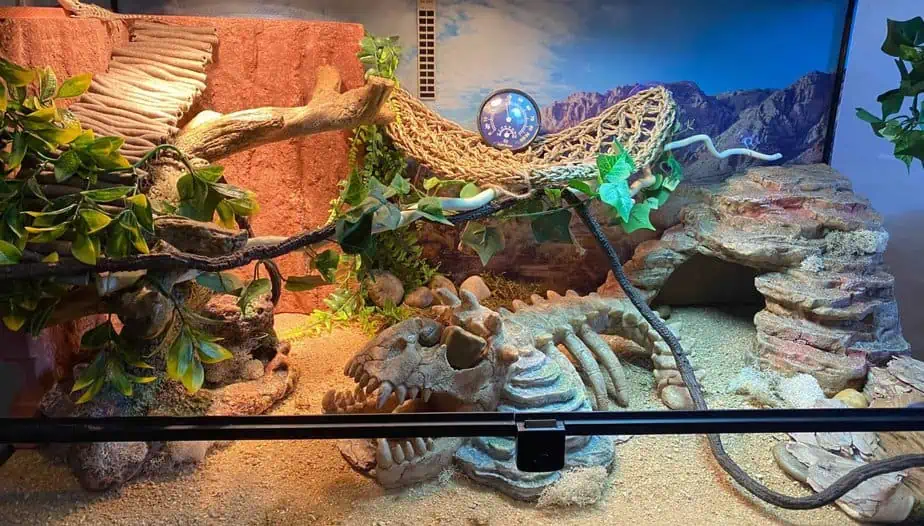
You can’t keep your bearded dragon in an empty cage. For efficient basking, relaxation, chilling, hiding, climbing, and other activities, your bearded dragon needs a range of different accessories and pieces of furniture.
It’s important to include one or more large branches in the bearded dragon’s terrarium.
Branches
Bearded dragons love climbing branches, fences, and rocks to catch some sun. They are semi-arboreal creatures.
Yet, there should be open room for walking and other accessories in about 70% of the terrarium.
Moreover, including a platform or branch will enable your bearded dragon to approach the light source for basking.
Depending on the terrarium’s size, pick one or two branches.
Grape wood branches, oak, maple, driftwood, lilac, Mopani wood, fruit trees, and willow are the greatest sorts of branches for your bearded dragon’s tank that you can buy.
Almost everything that is non-toxic can be used. Be careful to avoid choosing any conifers, such as pine trees, cedar, yew, juniper, cypress, spruce, redwood, and others, which are poisonous to your bearded dragon.
Choose the branches that are thought to be secure for your bearded dragon to be on the safe side.
A platform or a rock
A platform or a Hideout rock are two other possibilities for your bearded dragon’s basking location.
However, a branch or a rock shouldn’t be substituted for a platform because these additions provide your bearded dragon with a more naturalistic setting.
It’s best to set up multiple platforms or basking spots for your bearded dragon. In a terrarium, it’s crucial to provide one basking area for each bearded dragon.
Make sure to inspect and clean any rock that you are bringing if it has been collected yourself for any sharp edges.
Hammocks
Hammocks are a favorite place for bearded dragons to relax and hang out. Keeping a hammock will make your dragon happy. Bearded dragons enjoy if you place one in the corner of the tank across from the heating lamp.
Plants and Ornaments
The tank should be adorned with various plants and ornaments. They can include rocks, logs, and plants, both genuine and fake. These things serve to create a more realistic habitat while also giving the dragon somewhere to hide.
Bearded Dragon Diet
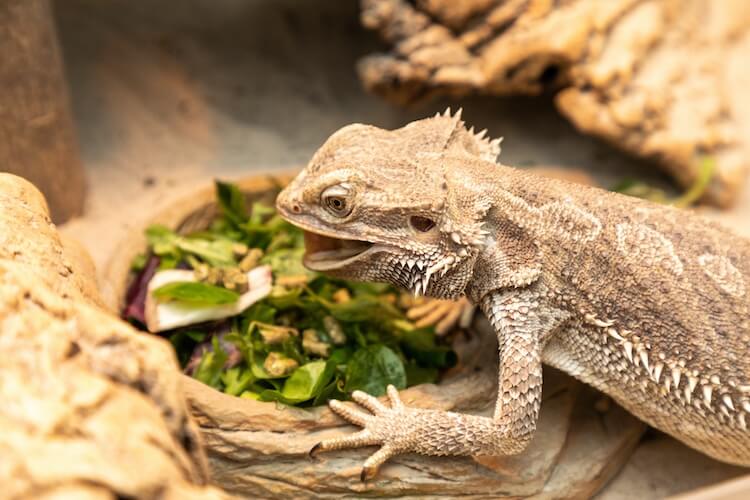
In order to keep your pet healthy and well-fed, a bearded dragon tank should be well-filled with food.
Live Insects: You may buy a variety of live food from pet stores or online, including as crickets, Dubai raches mealworms, and super worms, but it should be kept in a separate container to keep them from escaping. Moreover, be sure you are aware of how to maintain and care for the insects you select.
Bug tweezers: One or two sets of tweezers are useful to keep on hand for feeding live insects.
In addition to being entertaining, feeding your dragon with tweezers can also protect you from insects that may sting or bite. It is also an excellent alternative for individuals who would prefer not to handle live insects with their hands.
Feeding container: You should have a large, shallow plastic container on hand if you are using a loose substrate if you want to feed your dragon more closely if you don’t want to release live insects into the terrarium, or if you simply want a more enclosed environment.
Live Plants: Vegetables like carrots, sweet potatoes, and squash are also crucial for supplying fiber and vitamins, in addition to leafy greens like kale and collard greens, which are crucial for giving nutrients. Fruits should only be served as infrequent treats to prevent intestinal problems.
Also, it’s important to provide your bearded dragon with a range of proteins, such as boiled eggs, cooked lean meats, and gut-loaded feeder insects.
Water: Make sure your bearded dragon has access to a shallow dish filled with clean, fresh water. Plastic containers free of harmful paint or color can be used as water dishes. To ensure they are receiving the nourishment they need, you should also add vitamin and calcium supplements to their diet.
Tank Cleaning
Maintaining a clean bearded dragon enclosure will help to keep your pet’s surroundings safe and healthy.
Eliminating any garbage that has accumulated in the tank is the key step in cleaning it. This includes any leftover food, feces, and other trash that may have been discarded.
Regular tank cleaning is essential to prevent waste accumulation that can attract bugs or harm your bearded dragon
A bleach and water solution is a suitable disinfectant for reptiles that can be used for this. Make sure to properly rinse the tank after cleaning and sanitizing it.
It’s important to clean the tank’s contents as well. Any substrates, ornaments, and furnishings fall under this category.
Before cleaning these objects, make sure to remove all food and garbage.
Before adding the objects back to the tank, clean them with a reptile-safe cleaner and give them a good rinsing in water.
The tank should ideally be cleaned once every week. By doing this, you can keep the tank sanitary and microbial-free.
Final Verdict
Setting up the tank for your cute little friend should be a fun experience. It’s very easy to set up the tank as long as you know the basics that have to be included. Hope this guide was able to help you clear your confusion.
Let’s take a final look at the key important things that you will add to your list before heading out to shop for your beardie:
Tank Size: Hatchlings and Juveniles: 20-50 gallons (75-190L) Young Adults: About 50 gallons (190L) Adults: 75-120 gallons (280-455L), the bigger the better!
Temperature Range: High: 110°F (43°C), Low: 70°F (20°C)
Humidity: Maximum: 60%, Ideal: Below 30-40%
Lighting: UVA/UVB, 10.0 Basking light
Substrate: Paper towels, Newspaper, Sands
Supplies & Decoration: Basking structure (wood/rock)
Hiding place: Cave Branch Hammock
